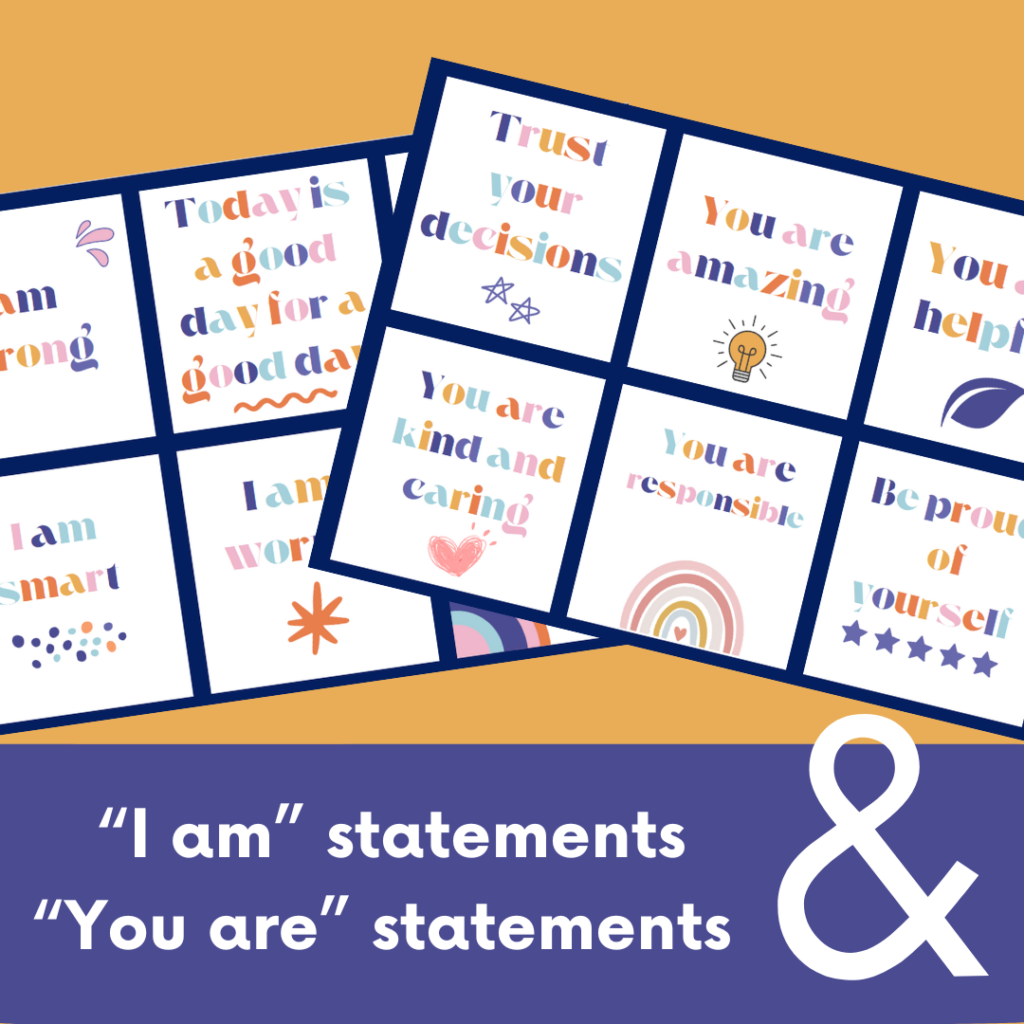
The Power of Positivity
As educators, our role extends far beyond imparting knowledge. We have the unique opportunity to shape young minds, build self-confidence, and inspire a lifelong love for learning. One effective tool in our arsenal for achieving these goals is the use of positive affirmations in the classroom. In this blog post, we will explore why teachers should harness the power of positive affirmations to create a nurturing and empowering learning environment for their students.
Why Teachers Should Use Positive Affirmations in Their Classrooms
1. Fostering a Growth Mindset
Positive affirmations help instill a growth mindset in students. When we encourage them to believe in their abilities and affirm their potential for growth, we set the stage for resilience, determination, and a willingness to embrace challenges. A growth mindset equips students with the confidence to tackle new concepts and persevere through difficulties.
2. Boosting Self-Esteem and Self-Confidence
Low self-esteem can be a barrier to learning. Positive affirmations promote self-esteem and self-confidence by emphasizing a student’s strengths and acknowledging their progress. When students feel good about themselves, they are more likely to engage actively in the learning process.
3. Creating a Positive Classroom Culture
Using positive affirmations helps create a positive classroom culture where kindness, encouragement, and support are the norms. This culture not only benefits individual students but also fosters a sense of community and cooperation among classmates.
4. Overcoming Negative Self-Talk
Many students struggle with negative self-talk, which can hinder their academic performance and overall well-being. Positive affirmations serve as a counterbalance to these negative thoughts, redirecting students’ focus toward their capabilities and potential.
5. Improving Mental Health and Well-Being
A positive affirmation practice contributes to students’ mental health and well-being. It can reduce stress, anxiety, and feelings of inadequacy, promoting a healthier mindset and emotional resilience.


5. Improving Mental Health and Well-Being
A positive affirmation practice contributes to students’ mental health and well-being. It can reduce stress, anxiety, and feelings of inadequacy, promoting a healthier mindset and emotional resilience.
6. Enhancing Academic Performance
When students believe in their abilities and have confidence in their potential, they are more likely to perform better academically. Positive affirmations can motivate students to set and achieve higher goals and strive for excellence.
7. Encouraging Goal Setting
Positive affirmations often revolve around setting and achieving specific goals. This encourages students to define their objectives, work toward them, and celebrate their accomplishments along the way.
8. Building Positive Teacher-Student Relationships
By incorporating positive affirmations into your teaching practice, you demonstrate your belief in your students’ capabilities and worth. This fosters a stronger bond between you and your students and encourages open communication and trust.
9. Developing Resilience
In today’s fast-paced world, resilience is a valuable life skill. Positive affirmations teach students how to bounce back from setbacks, adapt to change, and maintain a positive outlook even in challenging situations.
10. Lifelong Benefits
The power of positive affirmations extends beyond the classroom. Students who learn to use affirmations effectively carry this tool with them throughout their lives, helping them face adversity, overcome obstacles, and achieve their dreams.

Final Thoughts
The use of positive affirmations in the classroom is not just a teaching technique; it’s a powerful strategy for nurturing confident, resilient, and empowered individuals. By incorporating positive affirmations into your teaching practice, you create an environment where students can thrive academically and emotionally. Ultimately, you empower them to believe in themselves and their ability to make a positive impact on the world. So, let’s embrace the power of positivity in education and watch our students flourish as they realize their full potential.
Check out resources from my fellow teacher authors
Random Acts of Kindness: Real World ELA by Secondary Sara







